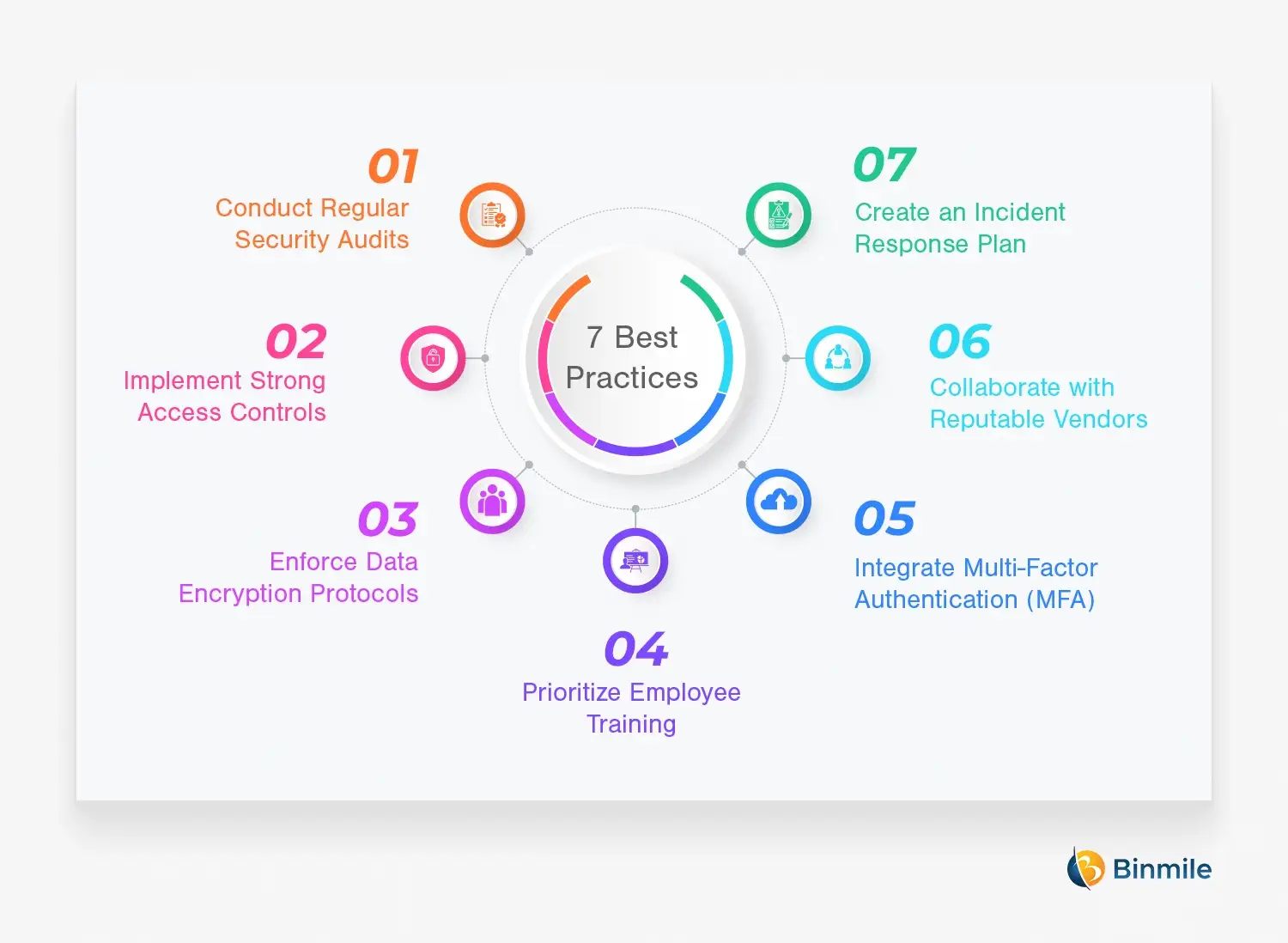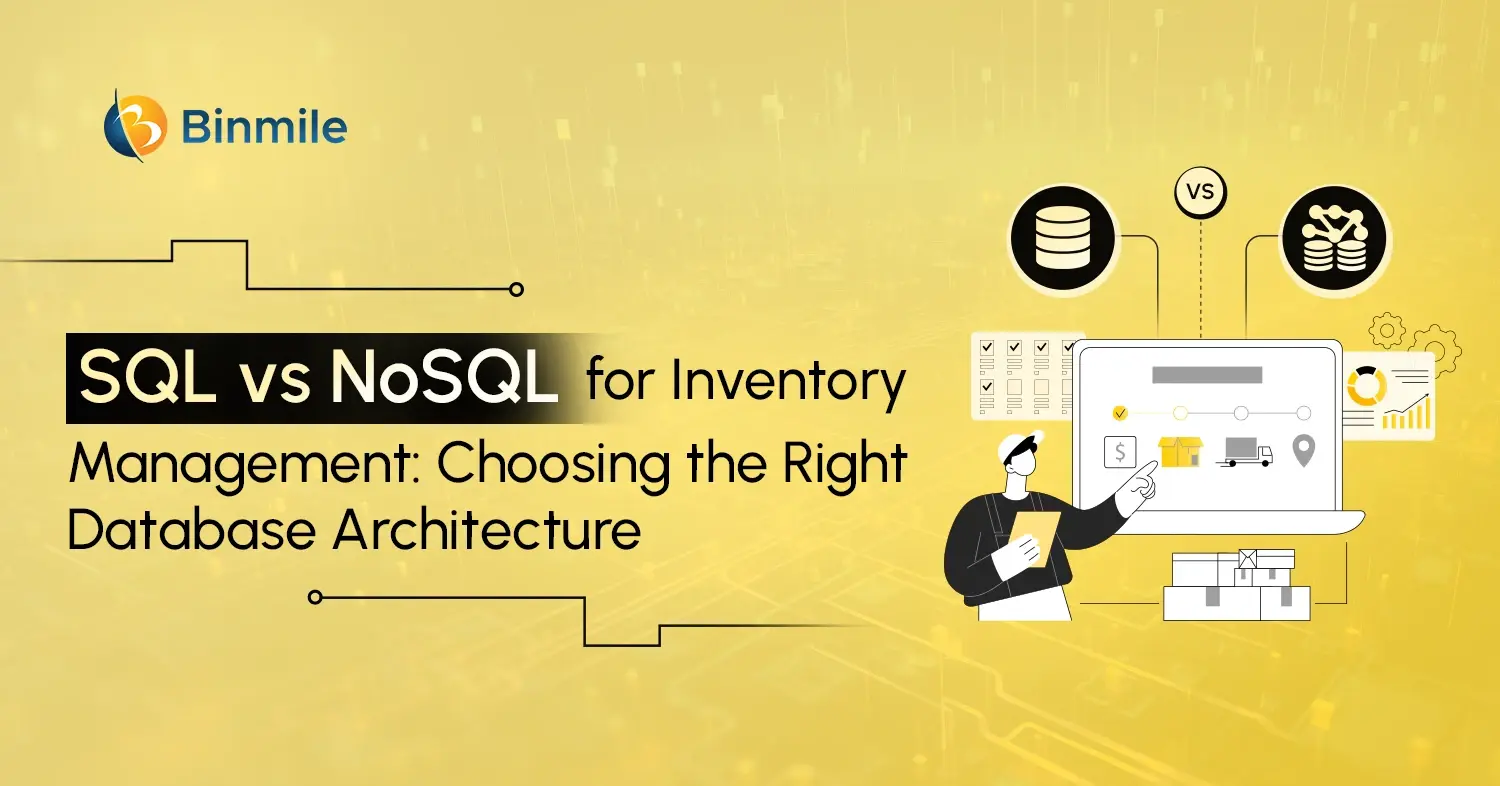- 7 best practice to secure supply chain management software
- issues with supply chain and technology
- key considerations for securing the software supply chain
- security of supply chain management software
- software in supply chain management
- supply chain management technology
- the impact of technology on supply chain
Organizations increasingly rely on applications to run their most common business operations. The software supply chain also acts like any other supply chain ecosystem. Some resources are consumed, then transformed via a set of processes, and finally supplied in the form of a product or service to a customer. 45% of organizations are predicted to be the potential victims of software supply chain attacks by 2025. It’s a threefold increase from 2021, and the security of supply chain management software has become a pressing issue for companies. Thus businesses must implement best practices to ensure the software supply chain security remains intact.
Software supply chain security addresses potential risks of an enterprise’s vendors, suppliers, logistics, and transportation. SCM software security plays a vital role in streamlining operations in a secured manner, therefore, businesses must follow best practices to mitigate supply chain Risks with SCM software. This helps them understand issues with the supply chain and technology. In addition, addressing the issues in supply chain management technology also lets them effectively identify, analyze, and prevent the risks that arise while working with other organizations as part of their supply chain. So, let’s discuss several key considerations for securing the software supply chain. Further, we’ll also discuss the benefits of having secured software in supply chain management from upstream risk, and how to prevent your organization from generating downstream risk.
How to Secure Supply Chain Management Software: 7 Best Practices
Supply chain management software (SCMS) is a crucial component for many businesses that rely on coordinating the flow of goods and services between suppliers and customers. Therefore, it becomes essential for a business to adopt strict and best practices that protect your software supply chain from security risks. As it can expose sensitive data, disrupt operations, and compromise quality.
Let’s know the best practices that help you build effective digital product development and keep your software supply chain security intact.
Software Supply Chain Security: 7 Best Practices

1. Conduct Regular Security Audits
Businesses must run frequent checks on software, access controls, or data encryption of their systems to identify potential vulnerabilities. Following the audit, rank and then mitigate the detected vulnerabilities according to their level of severity. Doing this in turn fortifies your supply chain management system and protects important assets, associates, customers, and communities.
2. Implement Strong Access Controls
To reduce unauthorized access, ensure any sensitive data is available only on a controlled basis. Set up and implement robust access controls such as defining roles and privileges in line with job functions. Remember, access levels can change with the company, therefore review or update them regularly.
3. Enforce Data Encryption Protocols
Employ rigid and robust encryption protocols to protect sensitive information or data, during transfer and storage without leaving any vulnerable spot that could be misused later. Data encryption is an important line of defense and adds a layer of protection to make your supply chain software much more secure.
4. Prioritize Employee Training
Foster an environment of vigilance and responsibility, so that your workforce can discover and report cyber attacks or threats soon. Regular training of employees equips them with hands-on learning experiences, practical skills, and exposure to real-world scenarios. This helps them be fully aware of what security protocols to follow, and how to detect, respond to, and mitigate such threats effectively.
5. Integrate Multi-Factor Authentication (MFA)
Multi-factor authentication implies users must prove their identity in several different ways before they can run the software. Thus, making it much more difficult to break in if they don’t have proper credentials. For example, a user will need to enter a code sent via phone or scan face/fingerprint to access a device or software.
6. Collaborate with Reputable Vendors
Partner with a reliable vendor for developing supply chain management software. Research thoroughly and select a logistics software development services company with a good reputation and following the standards of your industry. Stay in touch with them frequently so you can be notified of the latest updates and security changes for your software.
7. Create an Incident Response Plan
Businesses must establish an incident response plan that dictates how any supporting policies, plans, and processes should be contextual, based on risk, and should account for all regulatory reporting requirements. In addition, whatever information is gathered by security tools and processes is automatically delivered to the parties responsible for taking action, whether in-house or outside your organization. This allows you to quickly respond to attacks and mitigate any potential risk to your business.
*Bonus Point
Request for a software bill of materials (SBOM) especially when you’re aware that the vendor or in-house team has used external components to build the software. An SBOM offers an overview that lists all third-party components and dependencies within the software you distribute and use, and demonstrates security awareness and license compliance. This can be a guide to the latest advisory affecting components in the software and help you gain visibility into the software supply chain.
Also Read: Benefits of ERP in Supply Chain Management Software
Mitigating Supply Chain Threat in Today’s Digital Landscape: An Introduction
To get an efficient custom application development or software for their logistics, businesses build a software supply chain that is made up of everything and everyone that touches your code in the software development lifecycle (SDLC). For example, from application development to the CI/CD pipeline and deployment, it includes networks of information about the software, like the components (e.g. infrastructure, hardware, operating systems, etc.), the people who wrote them, and the sources they come from, like registries, codebases, or other open source projects.
Software supply chain products are more prone to vulnerabilities, presenting multiple attack points. Bad actors can use these weak spots to infiltrate the software supply chain and negatively impact software security. That’s where software supply chain security steps in. It refers to a combination of best practices and tools for risk management and cybersecurity to help you keep the software supply chain from potential threats or attacks.
Software Supply Chain Threats or Risks
Your Supply chain management software can be exposed to these major risks:
- Vulnerable Open-Source Software: Malicious code in popular OSS libraries can spread to countless applications.
- Compromised Third-Party Components: Attackers infiltrate vital third-party components to target numerous downstream applications.
- Insecure Development Practices: Weak coding, testing, and controls expose the software to data breaches and unauthorized access.
Importance Of Software Supply Chain Security
- Avoiding Costly Disruptions and Data Breaches: Cyberattacks on the software supply chain bring severe consequences such as stolen intellectual property, operational disruptions, or costly data breaches. However, having a solid strategy can help you avoid such financial or reputational risks and protect your assets, resources, and users.
- Building Trust and Maintaining Compliance: With proper software supply chain security measures you tell your customers that data privacy and ethical development are important to you, along with some major compliance regulations. This commitment to user’s data and privacy builds trust in your users and paves the way for new business.
- Minimizing Future Vulnerabilities and Attacks: Software supply chain security goes further than just near-term threats but also builds long-term resilience. The key is to follow secure software development services practices, which bring a less vulnerable codebase that future attackers find harder to exploit.
- Fostering a Secure Software Ecosystem for All: Software supply chain security isn’t just focusing on securing individual companies, it’s about collective responsibility. When you prioritize secure practices for software supply chain security, you create a safer software ecosystem for everyone from developers, vendors, and users alike.
Also Read: Logistics and Supply Chain Trends
Wrapping Up
The interconnectedness of modern businesses has opened a new door of possibilities, innovations, and streamlining business operations. However, the impact of technology on the modern supply chain has some downsides too. The increasing rate of change in the software ecosystem, and a chain of complex and interconnected networks or systems has given bad actors plenty of attack points to target. Exploiting just one weakness opens the door for a threat actor to traverse down the supply chain where they can steal sensitive data, plant malware, and take control of systems – something we’ve seen plenty of examples of in recent times.
Therefore, logistics and SDLC identify vulnerabilities and work to remove them as quickly as possible. To do that, it’s vital to clearly understand your threat landscape to prevent supply chain attacks against software products. One way is to implement best practices that not only fortify your supply chain management technology but also keep you vigilant about future attacks or potential vulnerabilities. One can never be sure to eradicate all threats, hopefully, the software supply chain security best practices will help you position your organization to prepare for them and mitigate their effects.
Looking for a vendor that understands the upstream supply chain and provides you with a product that you can rely upon and trust your business with 24/7? Get in touch with us today, we’ve got you covered!
Frequently Asked Questions
The Seven S’s of supply chain are Synergy, Standards, Semantic, Serialization, Synchronization, Sustainability and Social.
Important factors to secure your software supply chain include the security of proprietary and open source code, protection against malicious code, securing development and delivery infrastructure, and the security of APIs.









